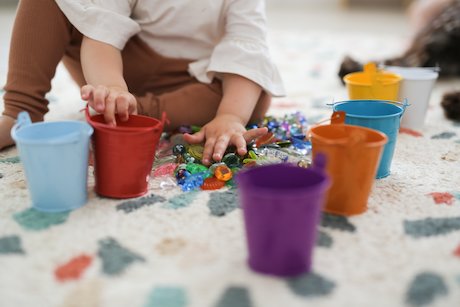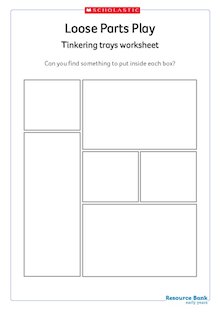The joys of loose parts play
- Recommended
- 5 Stars
Add to My Folder
Allowing children the opportunities and time to undertake their own learning through playing with everyday objects, or loose parts, is a popular part of continuous provision in many early years settings. At home too, from an early age, the fun of emptying a box of toiletries, or playing with the packaging rather than the present, is one many parents will have witnessed. The joys of loose parts play or ‘tinkering’ are manifold and the best way to relate to them is to have a go yourself. But starting this activity off in your setting can feel a bit daunting, so here are some practical tips to get started.

Getting started
Try collecting some suitable resources for loose parts play (see Resources). Recycled materials are a good place to start, and don’t cost anything. Then move onto natural materials, which can also involve the children going on a walk outside to collect suitable items. Using what you already have around your setting or house is a good way to stick to the principles of loose parts play.
Tinkering trays
Already a member? Sign in below.
Published 14 September 2020
Reviews
Rated 5/5 from 2 ratings
You need to be signed in to place a review.





Soup
on 1 February 2021
All you need to get goiing
I am a teacher and I support two new to EYFS teaching assistants and they have really found this article really helpful to build their confidence in understanding what the children are doing and what they can do to support them or record their observations.